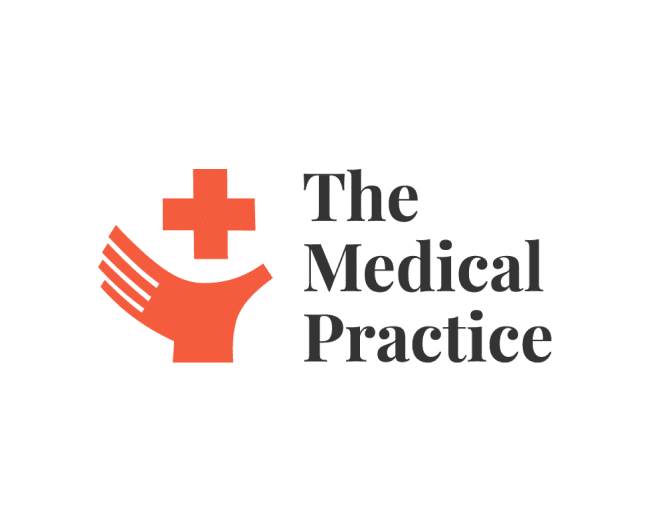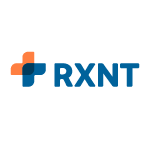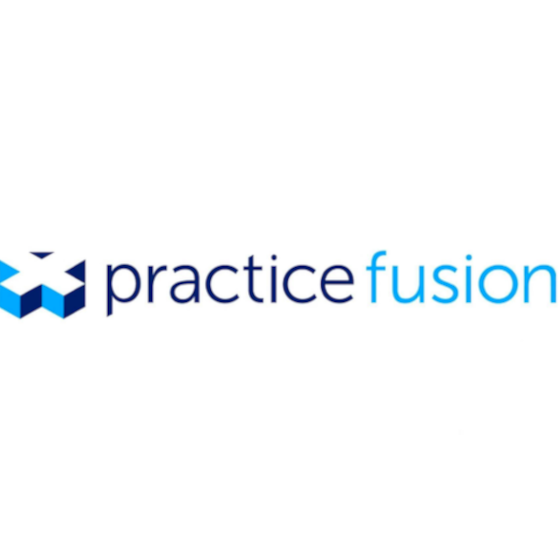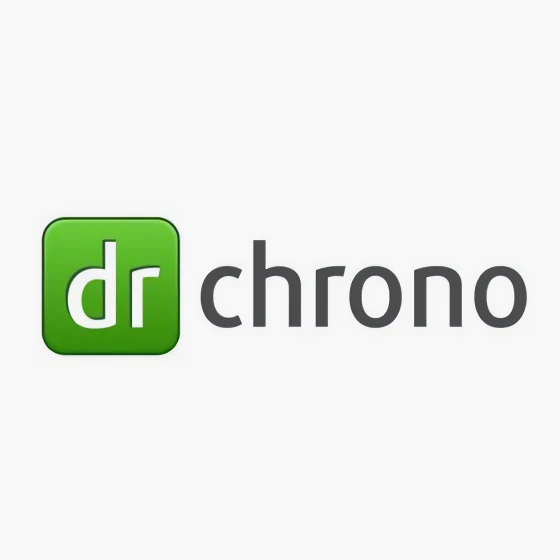10 Best Patient Management Software Shortlist
Here's my pick of the 10 best software from the 18 tools reviewed.
- 8. Limble CMMS
Our one-on-one guidance will help you find the perfect fit.
Patient Management Software is a one-stop solution for automated, streamlined and efficient patient care. It provides an EMR (Electronic Medical Records)solution, charting, patient scheduling, and billing, all bundled into one powerful platform.
You'll see significant improvements in practice management, organization, productivity, patient satisfaction, as well as revenue generation. This allows you to dedicate more time providing quality care and less time wrestling with the administrative tasks that keep you from what matters most - your patients. If you want a patient management system that’ll streamline and transform your practice, check out these options.
Why Trust Our Software Reviews
We’ve been testing and reviewing medical practice software since 2023. As medical practice technology researchers ourselves, we know how critical and difficult it is to make the right decision when selecting software. We invest in deep research to help our audience make better software purchasing decisions.
We’ve tested more than 2,000 tools for different medical practice use cases and written over 1,000 comprehensive software reviews. Learn how we stay transparent & check out our software review methodology.
Best Patient Management Software Summary
| Tool | Best For | Trial Info | Price | ||
|---|---|---|---|---|---|
| 1 | Best for patient relationship management in the cosmetic and aesthetic sector | Not available | From $75/user/month (billed annually) | Website | |
| 2 | Best for its integrated suite of healthcare software solutions | Free demo available | From $110/month/provider | Website | |
| 3 | Best for cloud-based EHR solution suitable for small to mid-sized practices | Not available | From $149/user/month (billed annually) | Website | |
| 4 | Best for comprehensive practice management with integrated billing | Free demo available | From $429/user/month (billed annually) | Website | |
| 5 | Best for integrated practice management, offering seamless EHR and billing | Free demo available | From $199/user/month (billed annually) | Website | |
| 6 | Best for automation of administrative tasks in healthcare clinics | Not available | From $49/user/month | Website | |
| 7 | Best for enhancing patient satisfaction through tracking and analytics | Not available | From $200/user/month. | Website | |
| 8 | Not available | Website | |||
| 9 | Best for streamlining workflow and improving staff communication in medical facilities | Not available | Pricing information for Practice Flow is available upon request | Website | |
| 10 | Best for online appointment scheduling | 30-day free trial available | From $39/user/month | Website |
Best Patient Management Software Reviews
Pabau
Best for patient relationship management in the cosmetic and aesthetic sector
Pabau is a comprehensive practice management software with a special focus on the cosmetic and aesthetic industry. It aids businesses in managing patient interactions, appointments, and billing, specifically tailored to cater to the needs of cosmetic and aesthetic practices.
Why I Picked Pabau: I chose Pabau for its specialized approach to patient relationship management in the cosmetic and aesthetic sector. Its focus on this specific industry makes it unique and particularly well-suited for practices in these fields. This tailoring aligns with its designation as best for patient relationship management within the cosmetic and aesthetic sector.
Standout features & integrations:
Key features of Pabau include patient record management, appointment scheduling, and invoice processing, all fine-tuned for the cosmetic and aesthetic industry. The platform also provides comprehensive marketing tools to help practices reach their clients more effectively. Pabau integrates with several popular applications such as Mailchimp for email marketing and Xero for accounting, enhancing its functionality and user convenience.
Pros and cons
Pros:
- Seamless integration with popular applications like Mailchimp and Xero
- Provides comprehensive patient relationship management tools
- Tailored for the cosmetic and aesthetic sector
Cons:
- Additional features are available at higher pricing tiers, which may increase costs
- Requires a yearly commitment for the base pricing
- May not be as relevant to practices outside the cosmetic and aesthetic industry
RXNT provides an integrated software suite designed for healthcare management. The platform combines multiple functionalities, such as electronic health records (EHR), practice management (PM), and medical billing, all in a single interface, thereby promoting efficiency in health practice operations.
Why I Picked RXNT: I selected RXNT for its remarkable ability to consolidate different healthcare management components into one platform. Unlike other tools, RXNT stands out because it integrates EHR, PM, and medical billing solutions, hence offering a comprehensive tool for healthcare providers. This aspect makes it best for its integrated suite of healthcare software solutions.
Standout features & integrations:
RXNT provides a robust EHR solution with customizable templates and a patient portal for improved engagement. Its PM component facilitates appointment scheduling, document management, and workflow automation. Furthermore, the medical billing module supports claim submission and tracking, payment processing, and revenue cycle management. The platform integrates seamlessly with third-party applications, particularly those used in the healthcare industry, for a more extensive data network.
Pros and cons
Pros:
- Comprehensive billing module supports revenue management
- Customizable EHR templates offer flexibility
- Integrated suite simplifies healthcare management
Cons:
- Higher pricing tiers could be expensive for some users
- The platform may require a learning curve due to its extensive features
- The comprehensive suite might be overwhelming for smaller practices
Best for cloud-based EHR solution suitable for small to mid-sized practices
Practice Fusion offers a cloud-based electronic health record (EHR) platform aimed at enhancing patient care. This tool serves healthcare providers with various features, such as appointment scheduling, charting, and prescription writing.
Why I Picked Practice Fusion: I picked Practice Fusion for its dedication to providing an easy-to-use, cloud-based EHR solution. Its cloud nature means the tool is accessible anytime, anywhere, making it a convenient choice for smaller practices that might not have extensive IT infrastructure. Considering these attributes, Practice Fusion is a compelling choice for a cloud-based EHR solution suitable for small to mid-sized practices.
Standout features & integrations:
Among its numerous features, Practice Fusion offers customizable templates, patient portal, appointment reminders, and electronic prescriptions. It provides real-time patient eligibility checks and lab integration for comprehensive patient care. Moreover, Practice Fusion supports integrations with many third-party applications, including billing software and various lab systems, facilitating streamlined data flow across different systems.
Pros and cons
Pros:
- Supports a wide range of integrations, ensuring smoother data exchange
- Allows customizations of templates, enhancing workflow efficiency
- Provides a cloud-based EHR solution, enabling accessibility from anywhere
Cons:
- Customer support might be slow according to some users
- Limited options for more complex practices or specialties
- Some users may find the interface less intuitive
Best for comprehensive practice management with integrated billing
AdvancedMD is a healthcare technology company that provides an all-in-one medical office software suite for independent practices. It combines practice management, EHR, telemedicine, patient engagement, and billing services in a unified platform.
Why I Picked AdvancedMD: I chose AdvancedMD for its comprehensive approach to medical office software. What makes AdvancedMD stand out is its complete solution that covers the diverse needs of an independent practice – from patient engagement to revenue management. The robust, integrated billing service is a strong point that helps simplify financial management for practices, justifying why I believe it's best for comprehensive practice management with integrated billing.
Standout features & integrations:
Key features of AdvancedMD include medical billing services, EHR, patient experience management, and telemedicine capabilities. The system allows for detailed patient records, financial analytics, and seamless communication between medical professionals and patients. AdvancedMD integrates with numerous external systems, such as labs and pharmacies, radiology systems, and more to ensure comprehensive patient care.
Pros and cons
Pros:
- Allows seamless communication between patients and professionals
- Offers a robust billing system that simplifies revenue management
- Provides a comprehensive solution covering many aspects of medical practice
Cons:
- Customization can be limited in some areas of the software
- The user interface can be complex for beginners
- Higher cost compared to some other solutions in the market
DrChrono
Best for integrated practice management, offering seamless EHR and billing
DrChrono is a comprehensive healthcare management solution designed to facilitate easier workflow for medical practices. It combines EHR (Electronic Health Records), practice management, and billing into one accessible platform.
Why I Picked DrChrono: I selected DrChrono because of its seamless integration of core healthcare services. In my opinion, it offers a robust solution for modern healthcare providers, tackling key areas like EHR, practice management, and billing efficiently. Its ability to combine these vital aspects into one platform makes it best for integrated practice management.
Standout features & integrations:
The platform offers real-time patient eligibility checks, custom EHR forms, and appointment reminders. Furthermore, DrChrono's medical billing software can help to streamline revenue cycle management. It integrates well with several important platforms, including Box for secure storage, speech-to-text apps for efficient data input, and labs like Quest Diagnostics for better patient data management.
Pros and cons
Pros:
- Wide range of integrations with other key healthcare platforms
- Customizable to fit individual practice needs
- Comprehensive, integrated practice management solution
Cons:
- The learning curve can be steep for staff not familiar with digital tools
- Pricing might be higher than some other solutions in the market
- Some users find the platform less intuitive to navigate
ClinicSense is a practice management software specifically designed for therapy clinics. It offers a comprehensive toolset that includes appointment scheduling, treatment note (SOAP) management, invoicing, and payment processing.
Why I Picked ClinicSense: I picked ClinicSense due to its focus on therapy practices and its ability to handle various management tasks in one platform. It stands out with its specific features tailored for therapists, including treatment note management, which is critical in the therapy field. Hence, ClinicSense is best for complete management of therapy practices, from scheduling to SOAP notes.
Standout features & integrations:
ClinicSense provides crucial features such as online booking, electronic SOAP notes, and billing & invoicing. Moreover, it offers a client portal where patients can book and manage their appointments. ClinicSense doesn't heavily rely on third-party integrations due to its comprehensive in-house features but it does integrate with payment gateways like Square and Stripe to facilitate smooth transaction processing.
Pros and cons
Pros:
- Smooth integration with popular payment processors
- Features like online booking, automated reminders, EHR, and invoicing
- Comprehensive automation of administrative tasks
- Offers an online client portal for convenient patient access
- Comprehensive management features from scheduling to SOAP notes
- Specific focus on therapy practices makes it highly relevant
Cons:
- Requires some learning curve for complete utilization
- Limited advanced features in the starter plan
- Higher pricing compared to some other similar tools
- Some users report a need for more customization options
- May be more expensive than some other options in the market
- Limited third-party integrations
PatientTrak is a healthcare software tool that provides medical facilities with patient tracking and analytics. It aims to enhance patient satisfaction by monitoring patient flows, reducing wait times, and providing actionable insights based on collected data.
Why I Picked PatientTrak: PatientTrak caught my attention because of its specialized focus on patient satisfaction. Its capabilities to track and analyze patient data are particularly distinctive, and these functionalities make it a solid choice for any healthcare facility looking to improve patient experience. Given its unique features, it's clear why PatientTrak is the top choice for enhancing patient satisfaction through tracking and analytics.
Standout features & integrations:
PatientTrak’s main features include real-time patient tracking, visit analytics, and wait time reduction tools. Additionally, its reputation management tool provides the opportunity to gather and analyze patient reviews. On the integration front, PatientTrak can be smoothly integrated with the most common EHR systems, providing a streamlined experience.
Pros and cons
Pros:
- Effective integration with popular EHR systems
- Strong focus on enhancing patient satisfaction
- Dedicated tools for tracking patient flows and wait times
Cons:
- The interface may require a learning curve for some users
- Some features require a higher pricing tier
- May not suit facilities looking for a broader range of features
Limble CMMS is a computerized maintenance management system that aims to streamline workflows related to asset management and preventive maintenance. By providing a comprehensive solution, Limble CMMS stands out as a tool best suited for organizations looking for an advanced approach to manage their assets and maintenance processes.
Why I Picked Limble CMMS: I picked Limble CMMS primarily because of its strong focus on asset management and preventive maintenance. Its sophisticated set of features makes it stand out from the rest, offering a comprehensive tool to streamline maintenance management. Given its advanced capabilities, I find it to be the best solution for organizations needing a robust system for asset management and preventive maintenance.
Standout features & integrations:
Limble CMMS boasts an array of useful features such as asset tracking, work order management, and preventive maintenance scheduling. Additionally, it provides insightful reports, allowing users to make data-driven decisions. As for integrations, Limble CMMS can be seamlessly connected with various external systems including ERP and accounting systems, making it easier to manage operations.
Best for streamlining workflow and improving staff communication in medical facilities
Practice Flow is a healthcare tool designed to optimize workflow and enhance communication within medical teams. It offers a range of features that help clinics manage tasks efficiently, facilitating better patient care and overall team performance.
Why I Picked Practice Flow: I chose Practice Flow because of its distinctive approach to improving medical team workflow and communication. Unlike many practice management tools, it emphasizes the importance of intra-staff interaction for a better functioning clinical setup. It is best for streamlining workflow and improving staff communication in medical facilities due to its dedicated tools for these purposes.
Standout features & integrations:
Practice Flow boasts robust task management features that allow staff to track, manage, and delegate tasks seamlessly. It also includes communication tools for immediate intra-staff correspondence. While the tool's feature set is well-rounded in itself, it does integrate with EHR systems to ensure that all patient information is accessible and up to date.
Pros and cons
Pros:
- Integration with EHR systems for better data access
- Task management feature streamlines workflow
- Focus on staff communication improves team coordination
Cons:
- Less focus on patient-facing features compared to other tools
- Might require a learning curve for those not used to digital communication tools
- Pricing information is not publicly available
SimplePractice is a comprehensive practice management and electronic health record (EHR) system designed for health and wellness professionals. It offers a wide range of features to streamline the operations of both individual practitioners and group practices.
Why I Picked SimplePractice: I like its online appointment scheduling and booking system. This feature allows practitioners to set their availability, customize appointment types, durations, and locations (in-office or online), and display their calendars on their website or provide a booking link to clients. This eliminates the need for back-and-forth phone calls. Additionally, the system includes automated appointment reminders.
Standout features & integrations:
Key features include billing, customizable templates for documentation, telehealth, group appointments, ePrescribe, insurance claim filing, and a client portal with secure messaging. Integrations include Google Calendar, Stripe, iCloud, Microsoft Outlook, Braintree, Medsender, and Dazos CRM.
Pros and cons
Pros:
- Templates for notes, assessments, and other documentation
- Built-in telehealth platform
- Offers a wide range of features
Cons:
- Could have more deep-level customization options
- Lacks advanced reporting
Other Patient Management Software Tools
Below is a list of additional patient management software that we shortlisted, but did not make it to the top 9. Definitely worth checking them out.
- SimplePractice
For online appointment scheduling
- monday.com
Good for project management and team collaboration in healthcare settings
- CareCloud
Good for cloud-based, customizable practice management
- EHRZip
Good for secure electronic health record management
- ER Express
Good for improving patient experience in emergency departments
- 10to8
Good for efficient appointment scheduling and reminders
- NextGen Office
Good for its integrated electronic health solutions
- athenaOne
Good for interoperability, enabling effortless exchange of patient data across different platforms
- Mend
Good for its patient-friendly scheduling system
Patient Management Software Selection Criteria
When selecting the best patient management software to include in this list, I considered common buyer needs and pain points like improving appointment scheduling and managing patient records efficiently. I also used the following framework to keep my evaluation structured and fair:
Core Functionality (25% of total score)
To be considered for inclusion in this list, each solution had to fulfill these common use cases:
- Manage patient records
- Schedule appointments
- Track billing and payments
- Communicate with patients
- Generate reports
Additional Standout Features (25% of total score)
To help further narrow down the competition, I also looked for unique features, such as:
- Telemedicine capabilities
- Customizable workflows
- Patient self-service portals
- Integration with wearable devices
- Advanced analytics
Usability (10% of total score)
To get a sense of the usability of each system, I considered the following:
- Intuitive interface design
- Easy navigation
- Minimal learning curve
- Accessibility on mobile devices
- Clear and concise instructions
Onboarding (10% of total score)
To evaluate the onboarding experience for each platform, I considered the following:
- Availability of training videos
- Interactive product tours
- Access to webinars and workshops
- Comprehensive onboarding support
- User-friendly documentation
Customer Support (10% of total score)
To assess each software provider’s customer support services, I considered the following:
- 24/7 support availability
- Multi-channel support options
- Responsive support team
- Availability of a knowledge base
- Personalized assistance
Value For Money (10% of total score)
To evaluate the value for money of each platform, I considered the following:
- Competitive pricing
- Features offered for the price
- Flexibility of pricing plans
- Availability of discounts
- Cost-benefit ratio
Customer Reviews (10% of total score)
To get a sense of overall customer satisfaction, I considered the following when reading customer reviews:
- Overall satisfaction ratings
- Feedback on usability
- Comments on customer support
- Reports of any recurring issues
- Testimonials on feature effectiveness
How to Choose Patient Management Software
It’s easy to get bogged down in long feature lists and complex pricing structures. To help you stay focused as you work through your unique software selection process, here’s a checklist of factors to keep in mind:
| Factor | What to Consider |
|---|---|
| Scalability | Will the software grow with your practice? Consider future patient volume and additional users. Look for tools that can expand without significant extra costs. |
| Integrations | Does it work with your existing systems? Check compatibility with EHRs, billing systems, and other tools you use daily. |
| Customizability | Can you tailor the software to your needs? Ensure it allows adjustments to workflows, data fields, and user permissions. |
| Ease of use | Is it intuitive for your team? Avoid tools that require extensive training. Look for clean interfaces and straightforward navigation. |
| Implementation and onboarding | How long will it take to get started? Consider the setup time and resources needed. Check for support during the onboarding process. |
| Cost | Does it fit your budget? Review pricing models and total cost of ownership. Watch for hidden fees or required add-ons. |
| Security safeguards | How does it protect patient data? Ensure compliance with HIPAA and other regulations. Look for encryption and regular security updates. |
What Is Patient Management Software?
Patient management software is a tool that helps medical practices organize and manage patient information, appointments, and billing. Healthcare professionals, including doctors, nurses, and administrative staff, use these tools to enhance efficiency and patient care. Scheduling, record-keeping, and billing capabilities help with maintaining organized patient data and improving workflow. Overall, these tools simplify administrative tasks and improve the patient experience.
Features of Patient Management Software
When selecting patient management software, keep an eye out for the following key features:
- Scheduling: Allows you to manage and book patient appointments efficiently, reducing no-shows and optimizing time management.
- Patient records: Stores detailed patient information securely, making it easy to access and update medical histories.
- Billing: Automates invoicing and payment processes, ensuring accurate billing and simplifying financial management.
- Communication tools: Facilitates communication with patients through reminders and notifications, enhancing patient engagement.
- Reporting: Generates detailed reports on patient data and practice performance, aiding in informed decision-making.
- Telemedicine capabilities: Provides virtual consultation options, expanding patient access to care.
- Customizable workflows: Allows you to tailor processes to fit your practice’s specific needs, improving operational efficiency.
- Security safeguards: Ensures patient data protection with compliance to regulations like HIPAA, maintaining confidentiality.
- Integrations: Connects with other systems like EHRs and billing software, ensuring seamless data flow across platforms.
- User-friendly interface: Offers an intuitive design that’s easy for your team to navigate, minimizing training time.
Benefits of Patient Management Software
Implementing patient management software provides several benefits for your team and your business. Here are a few you can look forward to:
- Improved efficiency: Automates scheduling and billing, freeing up time for your staff to focus on patient care.
- Enhanced patient care: Provides quick access to patient records, ensuring informed and timely medical decisions.
- Better communication: Keeps patients engaged with reminders and notifications, reducing missed appointments.
- Data accuracy: Minimizes errors in patient records and billing, thanks to automated processes and integrated systems.
- Increased accessibility: Offers telemedicine features, allowing patients to consult with healthcare providers remotely.
- Cost savings: Reduces administrative overhead by simplifying workflows and eliminating paperwork.
- Regulatory compliance: Ensures data protection with security features that align with regulations like HIPAA.
Costs and Pricing of Patient Management Software
Selecting patient management software requires an understanding of the various pricing models and plans available. Costs vary based on features, team size, add-ons, and more. The table below summarizes common plans, their average prices, and typical features included in patient management software solutions:
Plan Comparison Table for Patient Management Software
| Plan Type | Average Price | Common Features |
|---|---|---|
| Free Plan | $0 | Basic scheduling, limited patient records, and basic communication tools. |
| Personal Plan | $5-$25/user/month | Advanced scheduling, patient records management, billing features, and email notifications. |
| Business Plan | $30-$60/user/month | Comprehensive patient management, telemedicine capabilities, reporting tools, and custom workflows. |
| Enterprise Plan | $70-$120/user/month | Full integration capabilities, advanced security features, personalized support, and analytics. |
Patient Management Software FAQ’s
What are the benefits of using the best Patient Management Software?
There are numerous benefits to using top-tier Patient Management Software, including:
- Streamlined administrative tasks, such as appointment scheduling and billing, saving valuable time.
- Centralized, quick access to patient records, enabling informed, personalized patient care.
- Improved communication between healthcare providers and patients, leading to better patient engagement.
- Powerful data analytics capabilities, aiding in strategic decision-making and process improvement.
- Increased data security, protecting sensitive patient information and ensuring compliance with healthcare regulations.
How much do these tools typically cost?
The cost of Patient Management Software can vary significantly based on the size of the practice, features offered, and whether it’s cloud-based or on-premise.
What are the pricing models for Patient Management Software?
There are typically three pricing models for this software. Per-user pricing involves a monthly or annual fee per user. Perpetual licensing involves a one-time fee for long-term use. Subscription pricing is based on usage and usually billed monthly or annually.
What is the typical range of pricing for these tools?
Pricing for Patient Management Software can range anywhere from $10 per user per month for basic systems to over $500 per user per month for advanced, comprehensive systems.
What is the cheapest Patient Management Software?
SimplePractice is one of the most affordable options, starting at $39 per user per month for its basic plan.
What is the most expensive Patient Management Software?
AdvancedMD is at the higher end of the spectrum, with pricing starting at around $729 per month for its comprehensive suite.
Are there any free Patient Management Software options?
While completely free options are rare, some software like Kareo and Zocdoc offer free trials. This allows users to test the software before committing to a paid plan.
What’s Next:
If you're in the process of researching patient management software, connect with a SoftwareSelect advisor for free recommendations.
You fill out a form and have a quick chat where they get into the specifics of your needs. Then you'll get a shortlist of software to review. They'll even support you through the entire buying process, including price negotiations.missed, we warmly invite you to share them. Your input is incredibly valuable, and it helps us ensure our content is as comprehensive and beneficial as possible.
























